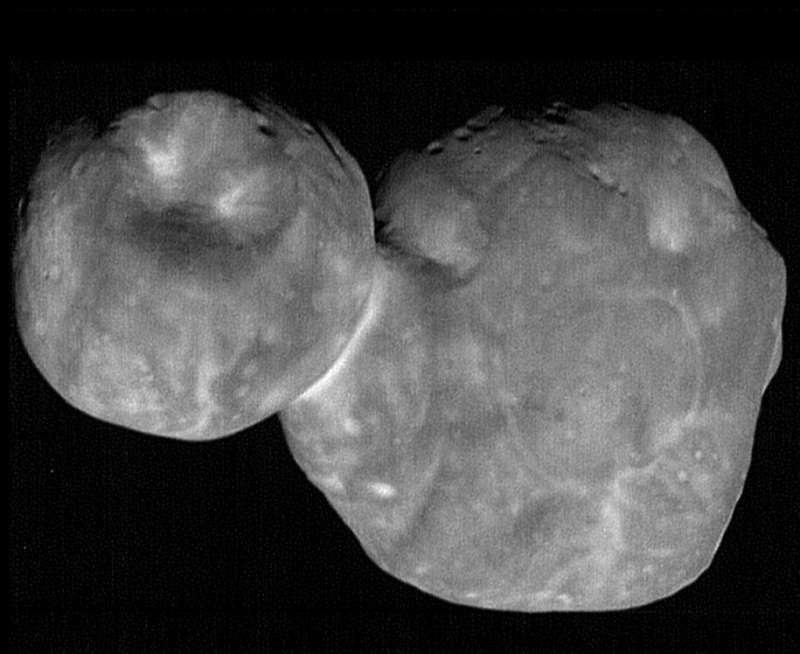Credit & Copyright: NASA,
Johns Hopkins University APL,
Southwest Research Institute,
National Optical Astronomy Observatory
Explanation:
On January 1, New Horizons swooped to within 3,500 kilometers of the
Kuiper
Belt world known as Ultima Thule.
That's about 3 times closer than its July 2015 closest approach to Pluto.
The spacecraft's unprecedented feat of navigational precision,
supported by data from ground and space-based observing campaigns,
was accomplished 6.6 billion kilometers (over 6 light-hours) from
planet Earth.
Six and a half minutes before closest approach to Ultima Thule it
captured the nine frames used in this composite image.
The most detailed
picture possible
of the farthest object
ever explored, the image has a resolution of about 33 meters per pixel,
revealing intriguing bright surface features and dark shadows
near the terminator.
A primitive Solar System object,
Ultima Thule's two lobes combine to span just 30 kilometers.
The larger lobe, referred to as Ultima, is
recently understood to be flattened
like a fluffy pancake, while the smaller, Thule, has a shape that
resembles a dented walnut.
1999 2000 2001 2002 2003 2004 2005 2006 2007 2008 2009 2010 2011 2012 2013 2014 2015 2016 2017 2018 2019 2020 2021 2022 2023 2024 2025 |
Yanvar' Fevral' Mart Aprel' Mai Iyun' Iyul' Avgust Sentyabr' Oktyabr' Noyabr' Dekabr' |
NASA Web Site Statements, Warnings, and Disclaimers
NASA Official: Jay Norris. Specific rights apply.
A service of: LHEA at NASA / GSFC
& Michigan Tech. U.
|
Publikacii s klyuchevymi slovami:
kuiper belt - Poyas Koipera
Publikacii so slovami: kuiper belt - Poyas Koipera | |
Sm. takzhe:
Vse publikacii na tu zhe temu >> | |
Mneniya chitatelei [12]
